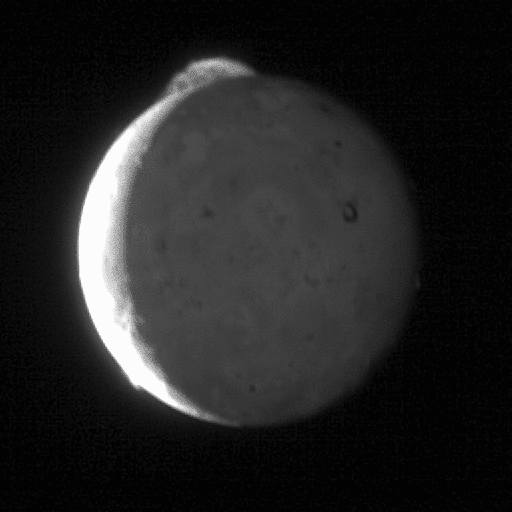Emily Lakdawalla • Mar 26, 2018
#MoonMon: Io's pretty plumes
On this Moon Monday, I'm still catching up from the Lunar and Planetary Science Conference. So rather than dig into the data archives to make my own moon photo, I'm featuring an animation processed by Gordan Ugarkovic, showing Jupiter's volcanic moon Io with its prominent plumes. You can get a sense of how high the plumes reach above the surace as you watch Io rotate. The tops of the plumes rise from nighttime darkness into sunlight, so they remain visible on the night side of the moon.


When I first looked at these photos, I thought they were from New Horizons, which famously photographed Tvashtar erupting when it passed by Jupiter in 2007. But nope! It's Cassini! I had no idea Cassini had seen such dramatic plumes from Io. That's what you get when amateurs dig into archival data!
One note about these images: they're taken through an ultraviolet filter. Io looks quite different in an ultraviolet filter than it does in a clear (broadband) filter. Here, for fun, is a New Horizons clear-filter image, which I've animated to show you what happens when you adjust the contrast -- you can reveal hidden plumes!

And here, because I can't not include it, is the famous New Horizons Tvashtar eruption sequence.

Support our core enterprises
Your support powers our mission to explore worlds, find life, and defend Earth. You make all the difference when you make a gift. Give today!
Donate

 Explore Worlds
Explore Worlds Find Life
Find Life Defend Earth
Defend Earth

